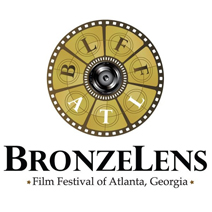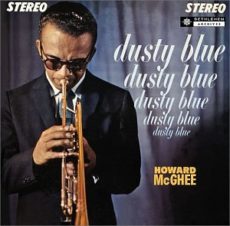
Daily Dose Of Jazz…
Howard McGhee was born on March 6, 1918 in Detroit, Michigan and originally played clarinet and tenor saxophone before taking up trumpet when he was 17. By 1941 he was playing in the territory bands led by Lionel Hampton, Andy Kirk being featured on McGhee Special, then with Count Basie and landing with Charlie Barnet from 1942-43. Participating in the fabled bop sessions at Minton’s Playhouse and Monroe’s Uptown House, he modernized his style away from Roy Eldridge, moving towards Dizzy Gillespie. However, it was in a club listening to the radio when he first heard Charlie Parker and became one of the early adopters of the new style, to the disapproval by older musicians like Kid Ory.
In 1946 a new label, Dial Records, organized some record sessions in Hollywood with Charlie Parker and the Howard McGhee combo. Joining these two were pianist Jimmy Bunn, bassist Bob Kesterson and Roy Porter on drums. He continued to work as a sideman for Parker playing on titles like Relaxin’ at Camarillo, Cheers, Carvin the Bird and Stupendous. Racial prejudice cut his California stay short when it became particularly vicious towards McGhee as half of a mixed-race couple.
Back in New York Howard he recorded for Savoy Records and had a historic meeting on record with Fats Navarro in 1948 on the Blue Note label. For much of the Fifties drug problems sidelined Howard but he resurfaced in the 1960s, appearing in many George Wein productions. His career sputtered again in the mid-1960s and he did not record again until 1976. He led one of three big jazz bands trying to find success in New York in the late 1960s. While the band did not survive, a recording was released in the mid-1970s.
He taught music through the 1970s, both in classrooms and at his Manhattan apartment. He was as much an accomplished composer and arranger as he was a performer. He recorded fifteen albums as a leader and held down sessions as a sideman with Dexter Gordon, Johnny Hartman, James Moody, Don Patterson, Joe Williams. Over the course of his career he would record for Felsted, Bethlehem, Contemporary, Hep, Black Lion, Sonet, SteepleChase, Jazzcraft, Zim, and Storyville record labels. Trumpeter Howard McGhee, known for his fast fingers and very high notes, passed away on July 17, 1987.
Sponsored By

Voices From The Community
![]()
#preserving genius
More Posts: trumpet
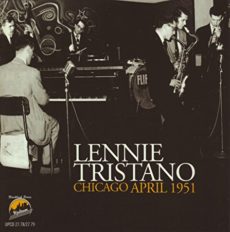
Daily Dose Of Jazz…
Buddy Jones was born Burgher Jones on February 17, 1924 in Hope, Arkansas and learned to play piano as a child. At the age of seventeen he went to study at the University of Missouri at Kansas City, where he met Charlie Parker. Under Parker’s influence, he opted for a career as a musician and studied bass during his time in the Navy.
After his discharge Buddy worked with Charlie Ventura in 1947 and then moved to Los Angeles, California where he played in smaller jazz bands. In 1949 he played with Joe Venuti as well as the Ina Ray Hutton Orchestra.
1950 saw Jones moving to New York City and working with Elliot Lawrence, whose arrangements were written by Al Cohn, among others . He also played with Buddy DeFranco, Zoot Sims, Gene Williams and the Lennie Tristano Quintet. Subsequently, he was employed as a student at CBS in New York from 1952 to 1964 , played on Jack Sterling’s morning radio show and studios with Peggy Lee and Frank Sinatra, as well as on tours with Harry James and Tommy Dorsey .
As a sideman Buddy performed on recording session led by Al Porcino, Stan Getz, Johnny Richards, Red Rodney, Jimmy Knepper, Porky Cohen, Don Lanphere, Gene Roland, Tiny Kahn, Joe Newman, Billy Byers, Osy Johnson, Manny Albam, Johnny Carrie, Thad Jones, Quincy Jones, Gerry Mulligan, Urbie Green, Bernie Glow, Conte Candoli, Ernie Royal, Hank Jones, Ernie Wilkins and many more.
Clint Eastwood enlisted his talents for the on the Charlie Parker biopic Bird in 1988, working alongside composer Lennie Niehaus as musical consultant. In 1996 he was inducted into the Arkansas Jazz Hall of Fame. Bassist Buddy Jones, never led a recording session and passed away on June 9, 2000 in Carmel Valley, California.
#preserving genius
More Posts: bass
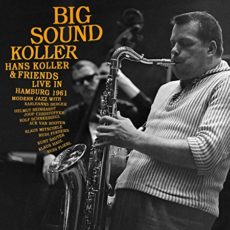
Daily Dose Of Jazz…
Hans Koller was born February 12, 1921 in Vienna, Austria. He attended the University of Vienna from 1936 to 1939 and served in the armed forces from 1940 to 1946. Following World War II he returned home and played with the Hot Club of Vienna.
Emigrating to Germany in 1950, Hans formed a small ensemble there. During the decade of the Fifties he played with Freddie Brocksieper, Albert Mangelsdorff, Jutta Hipp, Dizzy Gillespie, Bill Russo, Lee Konitz, Stan Kenton, Eddie Sauter, Benny Goodman, Attila Zoller, Oscar Pettiford, Kenny Clarke, Zoot Sims and Jimmy Pratt.
From 1958 to 1965 he directed the jazz workshops of the Norddeutscher Rundfunk in Hamburg, Germany before returning to Vienna in 1970. Soon after his return he formed his own ensemble, Free Sound, and later that decade he worked with the International Brass Company. In addition to playing and bandleading, Koller also composed; among his original works are a 1968 ballet titled New York City.
Tenor saxophonist and bandleader Hans Koller, who was also a recognized abstract painter, passed away on December 21, 2003 in his hometown of Vienna.
Sponsored By
www.whatissuitetabu.com
![]()
#preserving genius
More Posts: saxophone
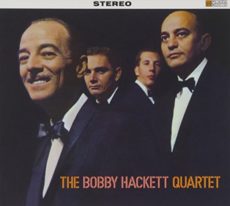
Daily Dose Of Jazz…
Bob Carter was born Robert Kahakalau on February 11, 1922 in New Haven, Connecticut and learned to lay the bass and guitar from his father, a vaudeville performer of Hawaiian heritage. He played in local orchestras from 1937 to 1940, toured from 1940 to 1942 and worked with his own trio in Boston, Massachusetts in 1944.
By 1944 he was working in various groups on New York City’s 52nd Street with Tony Scott, Dizzy Gillespie, Charlie Parker, Stuff Smith and Charlie Shavers among others. Following time spent playing bebop with Allen Eager and Max Roach in 1946, he worked with Charlie Ventura from 1947 to 1949 and again in 1953-54. Between the Ventura stints he played with Benny Goodman in 1949-50.
In 1953, he also worked with jazz guitarist Johnny Smith and appeared on the albums Jazz at NBC and The Johnny Smith Quintet Featuring Stan Getz.
After his second stint with Ventura he studied composition with Wesley LaViolette and later that decade his arrangements were used by Red Norvo, Bob Harrington, and Shelly Manne. He spent two years in Hawaii beginning in 1957, then returned to New York in 1959, where he played with Bobby Hackett. In the early 1960s, he worked in Germany in the Kurt Edelhagen Orchestra. He did little playing after the end of the Sixties decade.
Bassist and arranger Bob Carter passed away in Honolulu, Hawaii on August 1, 1993 at the age of 71.
#preserving genius
More Posts: bass

Daily Dose Of Jazz…
Sam Allen was born on January 30, 1909 in Ohio and accompanied silent films in movie palaces from the age of ten, and in the next few years seemed to have absorbed plenty of slapstick hi-jinx and derring-do from the Hollywood sagas he accompanied. In 1928 he moved to New York City, where he joined Herbert Cowans’s band at the Rockland Palace. Within a year he moved back to Ohio, where he played with Alex Jackson in 1930. Soon afterward he joined James P. Johnson‘s orchestra as the second pianist, as one piano could not play all the chords in the scores. This engagement he followed with an extended run in Teddy Hill’s band, which occupied him for most of the 1930s and included tours of Europe.
Early in the 1940s Sam worked one of his most musically satisfying collaborations as piano man in the sometimes rowdy combo of violinist Stuff Smith. He then became the pianist for the madcap jive jazz duo of Slim Gaillard and Slam Stewart, the gig for which he was best known, his years in the movie houses came in handy. His talent was further challenged with the bebop hyper-drive of trumpeter Dizzy Gillespie during the same decade.
By the end of the Forties decade Allen moved to Washington and worked locally as a solo pianist for a time, giving up being a touring sideman. Finally he relocated and settled into the Oakland, California, where he often accompanied vocalist Billie Heywood, among others.
Pianist Sam Allen passed away in September 1963.
Sponsored By

Voices From The Community
![]()
#preserving genius
More Posts: piano




